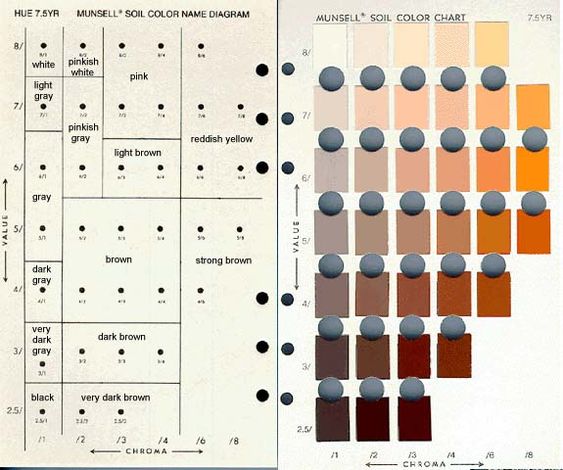No products in the cart yet. Keep shopping.
Gold Star Recyclers – Vilis Family Bakery
Vili's Family Bakery - Gold Star Recycler “I hate waste!” Vili Milisits, South Australian entrepreneur and owner of the iconic Vili’s Bakery, is...

Envy. It’s not a pretty word, and as gardener’s we all know it when we see the luscious, deep chocolatey brown soil in a fellow gardener’s garden. It’s not because we are thinking of chocolate, although that is reason enough for envy, but because we know that dark brown soil is the best soil for growing, just as we know that yellow or grey soils are not so good. Soil scientists classify soil by colour too. Soil colour tells us about some of the most important characteristics of the soil like mineral composition, age of the soil, carbon and organic matter.
From a practical gardening perspective soil colour also tells us useful things like how hot the soil gets, how long it retains the heat for, how good the drainage is, what minerals are already in the soil, and whether or not your soil is likely to take up the necessary nutrients. So let’s look at the common soil colour groupings. – Or you can go straight to the bottom and see what you need to do to improve your soil…
The rich soil we all are aiming for. This soil contains plenty of humus and organic matter and the darker the soil the more the organic matter has broken down into humus. Dark brown to black soils smell rich and healthy.
Beware of completely black soils. You’ll probably smell them as soon as you see them as they are caused by anaerobic soils where the soil is saturated and contains anaerobic bacteria rotting the organic matter rather than composting it.
These soils are normally high in iron oxide (hematite) and the colour depth and brightness tell you whether the nutrients have been heavily leached. Bright red and yellow soils normally have good drainage, nutrient levels and organic matter. Pale reds, yellows and oranges suggest that the soils have poor drainage and lower levels of nutrient and organic matter.
These soils have poor drainage and frequent saturation.
They tend to be anaerobic and have poor nutrient value.
White soil usually has a high level of sand and the nutrients have been leached out of the soil. On rarer occasions it can be due to calcium carbonate in the subsoil.
If you want to work out what your soil is telling you by the colour it can be tricky at first. One person’s gold is another person’s beige! It is made easier by using standard colour chart, a bit like a paint chart, used to help identify different soil characteristics by colour.
The Munsell Soil Colour Chart is used world wide to classify soil by colour so you know what you are comparing.

Dark brown or black soil all indicated your soil has nutrients available and reasonable drainage.
If your soil is gray, white or pale you are going to have serious drainage problems and you might be better to garden elsewhere, or to use wicking beds or raised beds.
Bright red, bright yellow or tan soils have good levels of nutrients and reasonable drainage. They will benefit from adding well composted organic matter, and mulch.
Paler reds, yellows and tans will need organic matter added to improve structure, drainage and nutrients.
blogs.edu/eu/divisions/sss/2014/03/30/soil-color-never-lies
https://vro.agriculture.vic.gov.au/dpi/vro/vrosite.nsf/pages/soilhealth_interpret_colour
https://www.dpi.nsw.gov.au/agriculture/soils/structure/garden
https://www.qld.gov.au/environment/land/management/soil/soil-properties/colour
Vili's Family Bakery - Gold Star Recycler “I hate waste!” Vili Milisits, South Australian entrepreneur and owner of the iconic Vili’s Bakery, is...
Jeffries latest innovation, Jeffries CulChar, is a complete, certified organic, slow-release fertiliser, including essential trace elements and minerals. The inclusion of Jeffries BioChar works together with the organic carbon of the included compost as a long-term soil conditioner. Jeffries CulChar is a very complete and cost-effective nutritional offer that is safe to use in direct contact with plants and their root systems.
Let’s take a closer look at how Jeffries CulChar works and compare how it performs next to other organic fertiliser alternatives.
There’s no denying that Jeffries Organic Compost is a useful soil amendment. Among its many benefits, it improves aggregate formation, porosity,...
One major advantage of compost is its ability to hold moisture, retain it for longer, increase the amount of water available to plant roots, and minimise the need for irrigation. Ultimately, improving water saving practices and reducing economic overheads for farmers. But how exactly does it do this?
If we dig deeper, we find that compost helps to save on water in a few different ways.